Phenometric predictors of Pontederia crassipes biomass under natural conditions in the Paraná River
Preditores fenométricos de biomassa de Pontederia crassipes em ambientes naturais no rio Paraná
Sylvina Lorena Casco; Violeta Amancay Zambiasio; Eduardo Adolfo Porcel; Luciana Irene Gallardo
Abstract
Keywords
Resumo
Resumo: Pontederia crassipes é uma planta aquática flutuante livre nativa da América do Sul, que colonizou rios tropicais em vários continentes, tornando-se dominante nas planícies aluviais.
Palavras-chave
References
Batzer, D.P., Rader, R.B., & Wissinger, S.A., 1999. Invertebrates in freshwater wetlands of North America: ecology and management. New York: John Wiley & Sons.
Blanco Belmonte, L., Neiff, J.J., & Poi de Neiff, A.S.G., 1998. Invertebrate fauna associated with floating macrophytes in the floodplain lakes of the Orinoco (Venezuela) and Paraná (Argentina). Verh. Int. Ver. Theor. Angew. Limnol. 26(4), 2030-2034.
Bonetto, A.A., 1986. Fish of the Paraná system. In: Davies, B.R., & Walker, K.F., eds. The ecology of river systems. The Netherlands: Dr. W. Junk Publ., 573-588.
Bruniard, E.D., 1999. Los regímenes hídricos de las formaciones vegetales: aportes para un modelo fotoclimático mundial. Resistencia, Chaco: Editorial Universitaria del Nordeste (Eudene).
Carignan, R., & Neiff, J.J., 1992. Nutrient dynamics in the floodplain ponds of the Paraná River (Argentina) dominated by the water hyacinth
Carignan, R., Neiff, J.J., & Planas, D., 1994. Limitation of water hyacinth by nitrogen in subtropical lakes of the Paraná floodplain (Argentina). Limnol. Oceanogr. 39(2), 439-443.
Casco, S.L., Carnevali, R.P., Poi, A.S.G., & Neiff, J.J., 2014. The influence of water hyacinth floating meadows on limnological characteristics in shallow subtropical waters. Am. J. Plant Sci. 5(13), 1983-1994.
Colonnello Bertoli, G., 1996. Aquatic vegetation of the Orinoco River Delta (Venezuela): an overview. Hydrobiologia 340(1-3), 109-113.
Daoust, R.J., & Childers, D.L., 1998. Quantifying aboveground biomass and estimating net aboveground primary production for wetland macrophytes using a nondestructive phenometric technique. Aquat. Bot. 62(2), 115-133.
Di Rienzo, J.A., Casanoves, F., Balzarini, M.G., Gonzalez, L., Tablada, M., & Robledo, C.W., 2020. InfoStat (Online). Córdoba: Grupo InfoStat, Facultad de Ciencias Agropecuarias, Universidad Nacional de Córdoba. Retrieved in 2023, March 17, from
Franceschini, M.C., Poi de Neiff, A., & Galassi, M.E., 2010. Is the biomass of water hyacinth lost through herbivory in native areas important? Aquat. Bot. 92(4), 250-256.
Gonçalves, C.V., Schwarzbold, A., Jasper, A., & Vasconcelos, M.C., 2010. Application of a non-destructive method to determine biomass in Pontederiaceae. Acta Limnol. Bras. 22(4), 361-366.
Klok, P.F., & van der Velde, G., 2017. Plant traits and environment: floating leaf blade production and turnover of waterlilies. PeerJ 5, e3212. PMid:28462025.
Navarro, G., & Maldonado, M., 2002. Geografía ecológica de Bolivia: vegetación y ambientes acuáticos. Bolivia: Fundación Simón Patiño.
Neiff, J.J., Casco, S.L., Mari, E.K., Di Rienzo, J.A., & Poi de Neiff, A., 2014. Do aquatic plant assemblages in the Paraná River change along the river’s length? Aquat. Bot. 114, 50-57.
Neiff, J.J., & Poi de Neiff, A., 1984. Cambios estacionales en la biomasa de
Neiff, J.J., Poi de Neiff, A., & Casco, S.L., 2001. The effect of prolonged floods on
Neiff, J.J., Casco, S.L., & Poi de Neiff, A., 2007. Response of
Nunes, L.S.C., & Camargo, A.F.M., 2017. A simple non-destructive method for estimating aboveground biomass of emergent aquatic macrophytes. Acta Limnol. Bras. 29(0), e2.
Pellegrini, M.O.O., Horn, C.N., & Almeida, R.F., 2018. Total evidence phylogeny of Pontederiaceae (Commelinales) sheds light on the necessity of its recircumscription and synopsis of
Poi de Neiff, A.S.G., Neiff, J.J., & Casco, S.L., 2006. Leaf litter decomposition in three wetland types of the Paraná River floodplain. Wetlands 26(2), 558-566.
Poi de Neiff, A.S.G., Neiff, J.J., Casco, S.L., & Gallardo, L.I., 2020. Macroinvertebrates of
Puhakka, M., & Kalliola, R., 1993. La vegetación en áreas de inundación en la selva baja de la Amazonia. In: Kalliola, R., Puhakka, M., & Danjoy, W., eds. Amazonia Peruana. Jyväskylä: PAUT y ONERN, 113-138.
Rocha-Ramírez, A., Ramirez-Rojas, A., Chavez-Lopez, R., & Alcocer, J., 2007. Invertebrate assemblages associated with root masses of
Santos, A., & Esteves, F., 2002. Primary production and mortality of
Shindoi, M.M.J.F., Sotelo, C.E., Galdeano, F. & Prause, J., 2003. Régimen de Heladas para el área de influencia de Colonia Benítez (Chaco). Chaco: INTA (EEA. Colonia Benítez).
Silva, C., & Esteves, F.A., 1993. Biomass of three macrophytes in the Pantanal of the Mato Grosso, Brazil. Int. J. Ecol. Environ. Sci. 19, 11-23.
Silva, T.S., Costa, M.P.F., & Melack, J.M., 2010. Assessment of two biomass estimation methods for aquatic vegetation growing on the Amazon Floodplain. Aquat. Bot. 92(3), 161-167.
Thomaz, S.M., & Esteves, F.A., 2011. Comunidade de macrófitas aquáticas. In: Esteves, F.A., ed. Fundamentos de limnologia. Rio de Janeiro: Interciência, 461-518, 3 ed.
Villamagna, A.M., & Murphy, B., 2010. Ecological and socio-economic impacts of invasive water hyacinth (
Wetzel, R.G., 1983. Limnology. Philadelphia: Saunders College Publishing, 2 ed.
Submitted date:
03/17/2023
Accepted date:
05/08/2024
Publication date:
07/08/2024

